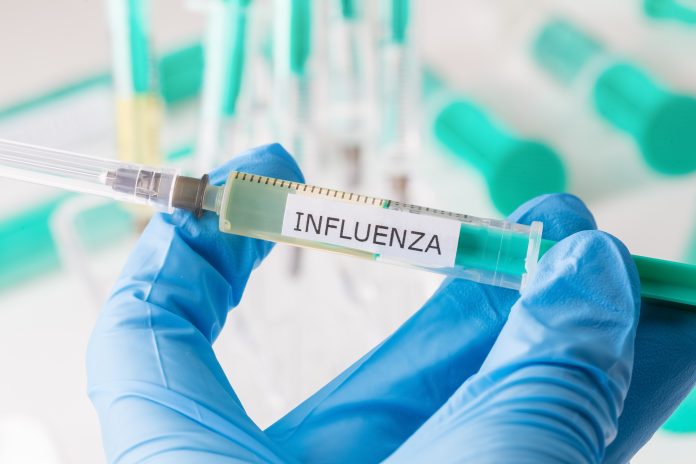A group of experts from the World Health Organization explain the Global Influenza Strategy for 2019-2030 that charts the path towards greater global influenza prevention, control, and preparedness through 2030
It’s been just over a century since the 1918 influenza pandemic, which killed an estimated 50 million people across the globe and resulted in a dramatic decline in life expectancy in many countries. Since then, we’ve experienced influenza pandemics in 1957, 1968, and 2009, and another influenza pandemic will happen.
However, pandemic influenza is not our only concern. Every year, seasonal influenza results in up to one billion cases and 290,000-650,000 respiratory-related deaths worldwide. While these figures demonstrate substantial morbidity and mortality due to seasonal influenza, they do not account for the full impact on society and health systems (i.e. loss of productivity and cost of hospitalisations). Additionally, novel zoonotic influenza viruses, such as avian influenza H7N9, continue to emerge and remind us that a pandemic is always on the horizon.
COVID-19 has exposed critical gaps in global preparedness and will prompt stakeholders from all sectors to develop and strengthen resilient systems to combat infectious diseases, including influenza. Influenza will continue to pose a threat in a post-COVID-19 world, and we must remain vigilant for the next influenza pandemic.
Global assets supporting influenza preparedness
Fortunately, the global community has been improving influenza preparedness, particularly since the 2009 H1N1 pandemic and our collective preparedness relies on two global assets.
WHO’s Global Influenza Surveillance and Response System (GISRS), which was established about 70 years ago, serves as the backbone to global influenza preparedness. GISRS has grown to over 150 institutions in more than 125 counties charged with conducting year-round surveillance of influenza viruses, monitoring the evolution of viruses, providing recommendations for annual vaccine compositions, and serving as a global alert mechanism for the emergence of influenza viruses with pandemic potential. However, this system provides benefits beyond influenza; it has largely supported the responses to SARS, MERS, and now COVID-19.
Additionally, significant improvements have been made in pandemic preparedness through the Pandemic Influenza Preparedness (PIP) Framework. The PIP Framework, which was adopted by WHO Member States in 2011, brings together Member States, industry, civil society, and other stakeholders to support the rapid and timely sharing of influenza viruses with human pandemic potential and the sharing of benefits arising from such sharing. Through the PIP Frame- work’s benefit-sharing mechanisms, industry’s annual contributions have assisted countries to build and strengthen their capacities across several areas: laboratory and surveillance, burden of disease, regulatory approvals, risk communications and community engagement, deployment of pandemic supplies, and national influenza pandemic preparedness plans.
The Global Influenza Strategy 2019-2030 Despite the considerable progress made in influenza preparedness since the 2009 pandemic, we have lacked an overarching strategy that brings together the many stakeholders and activities under a common goal to achieve. Therefore, in March 2019, WHO launched the Global Influenza Strategy 2019-2030 (GIS) to serve as that overarching framework for WHO, Member States, and relevant stakeholders. Building off of those global assets, WHO advocates for a holistic approach to influenza through the establishment of seasonal influenza capacities that are the bases for pandemic influenza preparedness and response.
With its vision as the attainment of the highest possible influenza prevention, control, and preparedness to safeguard the health of all people, the GIS outlines two high-level outcomes for 2030: (1) better global tools, such that a focused, consensus-driven plan leads to greater research, innovation, and availability of new and improved tools for the prevention, detection, control, and treatment of influenza; and (2) stronger country capacities, such that every country has a prioritised influenza programme that is evidence-based; is optimised to fit the country’s needs; and contributes to national and global preparedness, response, and health security. These two high-level outcomes are supported by four strategic objectives on research and innovation; global influenza surveillance, monitoring, and data utilisation; seasonal influenza prevention and control; and pandemic preparedness and response.
The path forward
As influenza and other health emergencies have shown us, new systems cannot be built in the midst of an epidemic or pandemic. Pandemic preparedness can only be realised through building routine systems that are regularly tested and improved, and seasonal influenza is an ideal pathogen to test those systems since it impacts every country each year.
In order to achieve our collective goals and the two high-level outcomes in the strategy, the global community must focus on the following:
• Prioritise influenza as a model for respiratory disease preparedness: There will be competing health priorities in every country, but the threat of respiratory diseases, especially influenza, is real — seasonal epidemics continue to wreak havoc on health systems each year, and an influenza pandemic will impact every country just as COVID-19 has. All stakeholders must ensure their systems are ready to respond to respiratory disease threats, and influenza can serve as the model for preparing and testing those systems.
Strengthen national influenza programmes: Countries should take advantage of the new strategy as a means to garner political and financial support so that national capacities can be sustained in the long-term. However, influenza capacity-building should not be done in a silo. Countries have the opportunity to assess how their national influenza programmes are functioning and how they could be strengthened, including through the introduction of seasonal vaccination programmes, to support not only influenza preparedness but also broader health security and health systems strengthening.
• Invest in research and development: Our current prevention and control tools, including vaccines and antivirals, have their limitations (e.g., suboptimal effectiveness, limited options for treatment and annual requirement for seasonal vaccination), which negatively impact public confidence and uptake. We must have greater investment in research and development across the globe so that by 2030, we have tools that are faster to produce, embrace innovation and advanced technologies, are more effective in preventing and treating influenza, and are more accessible by all countries.
For more information on WHO’s influenza activities and the Global Influenza Strategy, please visit www.who.int/influenza.
Christopher Chadwick
Technical Officer
Influenza Preparedness and Response
Wenqing Zhang
Manager
Global Influenza Programme
Anne Huvos
Manager
Pandemic Influenza Preparedness Framework Secretariat
Sylvie Briand
Director
Global Infectious Hazards Preparedness
Ann Moen
Chief
Influenza Preparedness and Response
World Health Organization











